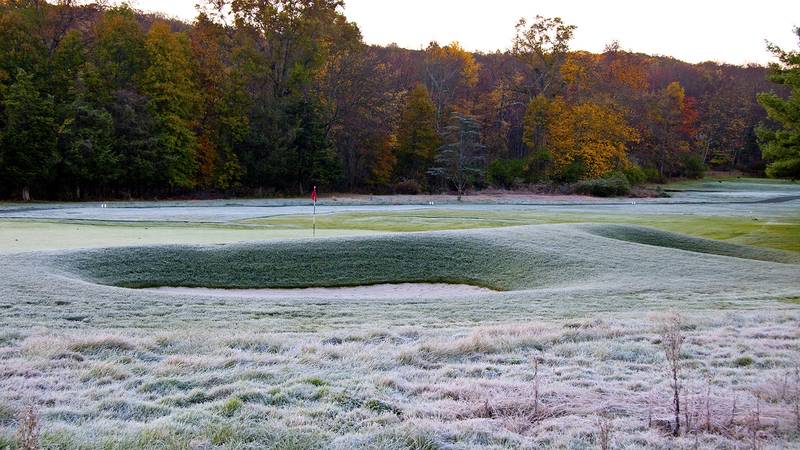Most every golfer who has played golf long enough has experienced a frost delay at some point in their golfing life. Unless you live in a tropical paradise, frost delays are simply part of the game.
Golfers get notified by their club or the course they're playing that day that a frost delay has happened, and they're working to get back on schedule. Most folks don't think about it after that, and they show up and play when they can. But what actually causes a frost delay in golf? Why is it a problem to play when frost is on the turf?
Most importantly to golfers, how long do frost delays last?
Why do frost delays happen in golf?
Frost delays happen in golf when the temperatures are low enough that frost has formed inside the turf and then can often be seen on the outside of the grass as well.
On clear, calm nights, cold air sinks to ground level. Temperatures at the ground can be lower than the temperature just feet higher where most people experience the world. These temperatures can persist longer than the above-ground temperature, and they can also persist in places where sunlight is not constant.
Why is it a problem to play when frost is on the turf?
When this happens, the grass plant itself becomes brittle and prone to damage that could be inflicted by traffic from golfers and golf carts -- above and beyond damage that might caused under normal circumstances. Playing golf on frosty grass could kill it, leading to widespread damage and poor course conditions down the line.
While it might be annoying to wait for the grass and the ground to thaw, the inconvenience isn't a big deal compared to potentially having a lousy course to play for months after playing in frost. Also, to be honest, playing on courses that haven't thawed yet is a total lottery once the ball hits the ground.
How long do frost delays last in golf?
Frost delays at golf courses can vary in length, affected by a variety of factors including temperature and geography. A frost delay could last longer on a course with many north-facing slopes, low-lying areas, shaded areas and areas sheltered from the wind because they will be slower to warm. Also, courses with lots of closely mown turf will have longer frost delays because short grass is most susceptible to damage from traffic during a frost delay.
Frost delays will last as long as it takes for all unavoidable areas of a golf course to thaw, and then course maintenance staff will need to prepare the course as usual, including moving hole locations and other adjustments from day to day.
If you're told about a weather delay at your course, it's best to wait for the all-clear signal from course staff, but keep an eye on the temperature to get above 37 degrees at a minimum before heading to the course on your own.

